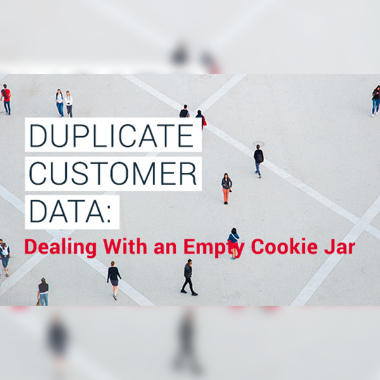As more global businesses go digital, there is increasing pressure on marketers to drive new growth. Digital marketing leaders are applying new, more personalized marketing strategies designed to appeal to target groups.
Gathering the data needed to create personalized campaigns has become increasingly difficult. Next year, Google will eliminate third-party cookie tracking in Chrome. Apple is also tightening privacy and eliminating device identifiers in iOS. That means less data will be available about buyers’ digital behavior.
With fewer details available from third parties, vendors need more accurate first-party customer data. This requires managing the mountains of data being gathered by internal and external sources, an incredibly complex task.
According to the most recent Gartner Marketing & Data Analytics Survey, 54% of marketing executives said that marketing analytics failed to have the impact expected. Thirty-two percent of those surveyed cited poor data quality as one of the top three reasons for the lack of impact, along with data findings that aren’t actionable and a lack of clear recommendations. One of the primary reasons for poor data quality is duplicate customer data.
Duplicate Customer Data Compounds Inaccuracies
While many marketers consider duplicate customer data a nuisance, it creates problems you can’t just work around. For example, duplicate data creates unresolved fields in data sources. When data fields such as customer name, email address and phone number remain unresolved, have duplicate data, or misspellings, it becomes impossible to maintain a unique record for each customer.
Data misalignment can create a disconnect between sales and marketing, and even promote conflict between the teams. Ultimately, poor data quality will reduce operating efficiencies and lead to lost sales opportunities.
Unresolved data entities come from various sources:
- Input errors – Manual data entry errors or even customer errors on digital forms are common.
- New contact information – People move, change phone numbers, and change email addresses, and keeping track of these changes is an ongoing problem.
- Import and export errors – Moving data by exporting and importing lists can lead to improperly matched fields and other errors.
- Inconsistent validation – Different data sources use different validation checks which can lead to different formats for the same field.
Without accurate data, you can’t get an accurate customer profile, which makes it harder to create personalized campaigns.
Bad Data Sabotages the Best Marketing Efforts
With the loss of third-party cookies, organizations need to find new sources of customer profile data. Most marketers will lean more heavily on email campaigns to reveal insights. Properly crafted email campaigns can collect information about customer interests and preferences, which enables email segmentation, personalization and automation. New marketing programs will be driven by more data provided by consumers with their consent.
Multiple marketing campaigns often result in unverified, duplicate email addresses. This can lead to unintentionally spamming customers with multiple offers, frustrating them and increasing opt-outs. Incorrect data also increases bounce rates which can put your domain at risk of being blacklisted.
Duplicate data entries also create chaos within the sales funnel. Confusion about valid and duplicate leads to inappropriate action and follow-up by both sales and marketing.
The real damage from bad data is to your company’s bottom line, starting with lost productivity. Research from Forrester Consulting shows that marketers spend about 32% of their time managing data, and 26% of marketing campaigns are impacted by bad data. Researchers estimated that 21 cents of every marketing dollar are wasted due to bad data.
Addressing the Duplicate Data Dilemma
As cookies disappear and new limits are placed on tracking online activity, marketers will be scrambling to gather what data they can before the new privacy rules kick in. They are also going to have to look elsewhere for customer data.
With more reliance on third-party data, integration becomes more important as does data deduplication. To make marketing messages more personalized, marketing professionals must use every scrap of data they can access to understand the customer. Integrating data from multiple internal and external sources results in a richer, more detailed customer profile, making it easier to create hyper-personalized campaigns. Without proper integration, there are going to be gaps in the profile data.
Part of data integration is having the right data management system to handle consolidation and correction of errors such as duplicates. The goal of any marketing campaign is to deliver the right content to the right person at the right time. With the right integration approach, you can assemble rich, error-free customer profiles, eliminating duplication, enabling highly personalized campaigns instead of relying on generic sales personas. The more accurate the customer profile data, the more personalized and more effective the campaign.
Your data management platform should be able to ingest and convert hybrid data. For example, it should be easy to exchange data with Salesforce, the most popular enterprise CRM. Some data management vendors provide ready-made connectors to simplify data exchange with the most common CRM and ERP platforms. Others provide data management solutions customized for vertical market applications, such as financial services, insurance or healthcare. Whatever approach you choose, the goal should be simple and accurate integration of data to create a single source of customer truth, without creating duplication errors.
The more accurate and transparent your data sharing between sales and marketing, the more collaboration and the more sales opportunities will result. More importantly, you’ll be able to build a single, detailed profile of your customer without wasting time and money.
The following Max P. Smith, from 2022 provides their research perspective. HERE



